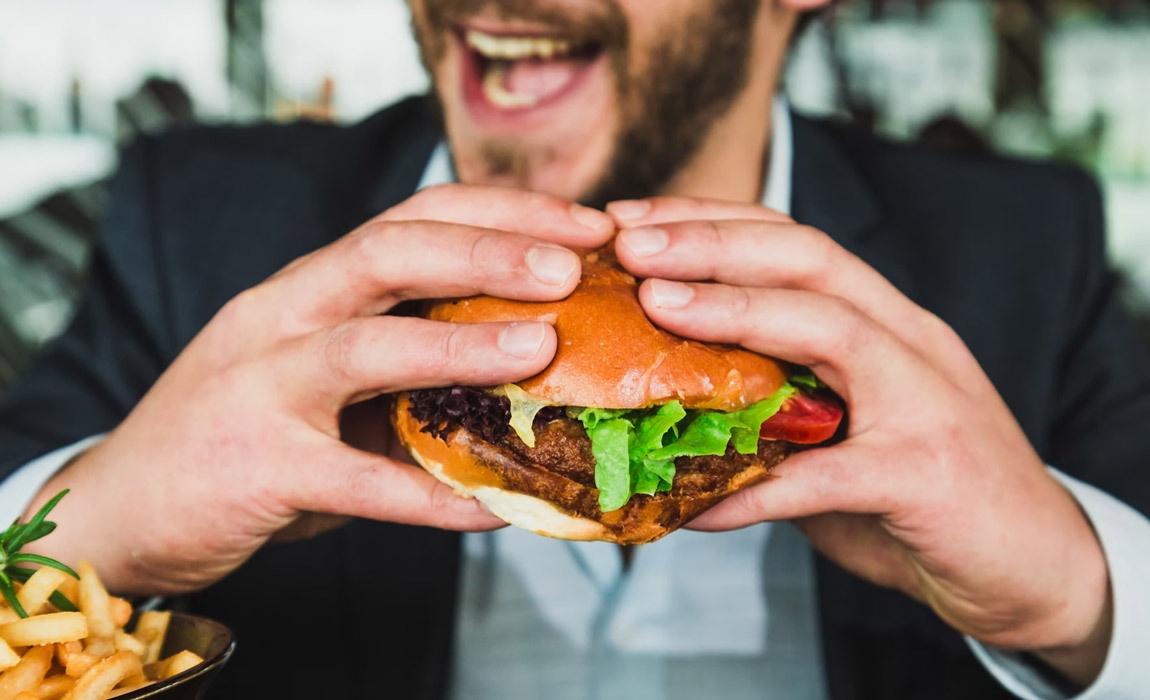Whether you're unwinding after work or sharing a session during guys night, cannabis consumption almost inevitably leads to one thing - raiding the kitchen. That intense craving for food after using marijuana has earned the nickname "the munchies," a phenomenon that affects nearly every cannabis user regardless of tolerance level.
What Men's Health Issues Concern You Most?
- Control caloric intake during cannabis use without sacrificing enjoyment or social experiences
- Make strategic food choices that support workout routines and physique goals
- Navigate cannabis use responsibly during dating life or early marriage without derailing nutrition plans
- Understand product differences to choose strains and consumption methods that align with lifestyle priorities
- Develop practical strategies for weekend sessions that don't compromise Monday morning performance
The Science Behind Cannabis-Induced Hunger
THC (tetrahydrocannabinol) fundamentally rewires your brain's appetite control system, creating a perfect storm of increased hunger signals. According to research published in Nature Neuroscience, THC hijacks neurons in the hypothalamus that normally signal fullness, causing them to instead promote hunger even when your stomach is satisfied.
The process involves your body's endocannabinoid system, which naturally regulates appetite, mood, and pain perception. When THC binds to CB1 receptors in your brain, it triggers the release of ghrelin - your body's primary hunger hormone. Simultaneously, THC enhances your sense of smell and taste through interactions with the olfactory bulb, making food appear more appealing and flavorful than usual.
This neurological hijacking explains why you might demolish an entire pizza during a weekend session with buddies, despite eating a full meal beforehand. Your brain genuinely believes you're starving, overriding normal satiety signals.
THC vs CBD: Why Only One Triggers Appetite
CBD (cannabidiol) operates through entirely different mechanisms than THC, which explains why CBD products don't trigger the same ravenous appetite. While THC directly activates CB1 receptors in your brain's appetite control centers, CBD actually works as an antagonist to these same receptors, potentially reducing appetite rather than increasing it.
CBD also lacks the psychoactive properties that amplify sensory experiences. You won't experience the enhanced taste and smell sensations that make junk food irresistible during a THC high. This makes CBD an attractive option for men seeking therapeutic benefits without compromising their nutrition goals or professional performance.
Research indicates that CBD may even support weight management by promoting the conversion of white fat to brown fat, which burns calories more efficiently. This stark difference means you can incorporate CBD into your routine without worrying about late-night food binges affecting your physique.
Understanding the Munchie Timeline
The onset and intensity of appetite stimulation depends heavily on your consumption method and dosage. Smoking or vaping creates nearly immediate effects, with increased hunger typically beginning within 10-15 minutes and peaking around 30-60 minutes after consumption.
Edibles follow a dramatically different timeline. The appetite effects usually begin 1-2 hours after consumption, coinciding with peak THC absorption. However, the hunger sensation from edibles tends to last longer - often 4-6 hours - making them particularly challenging for maintaining dietary discipline.
Your tolerance level, metabolism, and recent food intake all influence how intensely you experience the munchies. Men with higher body fat percentages may experience longer-lasting effects due to THC's fat-soluble nature, while those with faster metabolisms typically process the compounds more quickly.
How Consumption Methods Affect Appetite Intensity
Different cannabis consumption methods create dramatically different munchie experiences, allowing you to choose approaches that align with your dietary goals and social situations.
Smoking and Vaping
Inhaled cannabis produces moderate munchies that peak within 30 minutes and last 2-3 hours. This method offers the highest level of control since you can stop consuming once you reach your desired effects.
Edibles and Beverages
Edibles trigger the most intense and longest-lasting appetite effects, often catching users off-guard 1-2 hours after consumption. The liver converts THC into 11-hydroxy-THC, which creates more powerful hunger signals that can persist for 6-8 hours.
Concentrates and Dabs
High-THC concentrates (70-90% THC) produce immediate and overwhelming munchies due to the massive cannabinoid receptor activation. These methods are hardest to control and often lead to the most significant overeating episodes.
Tinctures and Sublingual Products
Sublingual absorption creates predictable, moderate appetite effects within 15-45 minutes that last 3-5 hours. Precise dosing makes tinctures the most manageable option for men prioritizing portion control and consistent effects.
Strategies to Avoid Excessive Munchies
Prevention starts before consumption. Eat a balanced meal containing protein, healthy fats, and complex carbohydrates 30-60 minutes before using cannabis. This strategy satisfies genuine hunger and reduces the intensity of THC-induced appetite spikes.
Remove tempting snacks from easy reach. Stock your kitchen with pre-portioned healthy options and eliminate processed foods that trigger dopamine responses during altered states. Preparing specific portions beforehand prevents mindless overconsumption when decision-making is impaired.
Stay hydrated throughout your session. Dehydration often masquerades as hunger, and THC can amplify this confusion. Drinking water regularly helps distinguish between genuine hunger and false appetite signals.
Consider timing your consumption strategically. Using cannabis closer to bedtime limits the window for extended eating, while morning or afternoon sessions during busy periods provide natural distractions from food-focused thoughts.
Managing Cannabis Use for Health and Fitness Goals
Successful integration of cannabis into a healthy lifestyle requires strategic planning and honest assessment of your consumption patterns and their effects on your broader wellness objectives.
Keto and Low-Carb Options
Maintaining ketosis during cannabis use requires careful preparation of high-fat, moderate-protein snacks that satisfy cravings without disrupting metabolic state. Prepare keto-friendly options in advance: mixed nuts with macadamias and pecans, full-fat cheese crisps, avocado with sea salt, pork rinds with guacamole, and fat bombs made with coconut oil and almond butter.
Strategic Strain Selection
Choose strains based on terpene profiles and cannabinoid ratios that align with your health goals rather than just THC potency. Sativa-dominant strains often provide more energetic effects that can redirect focus away from food, while THCV-rich strains may actually suppress appetite rather than stimulate it.
THCV (tetrahydrocannabivarin) works as a CB1 receptor antagonist, essentially blocking the same receptors that THC activates to trigger hunger. Research suggests THCV may reduce appetite, increase satiety, and even support blood sugar regulation - making it particularly valuable for men focused on weight management or athletic performance.
Look for African sativa strains like Durban Poison or certain haze varieties that naturally contain higher THCV levels (typically 1-5%). While THCV products are less common and more expensive than standard THC offerings, they represent a strategic option for guys who want cannabis benefits without compromising their nutrition goals during dating life or professional networking events.
Timing and Social Environment
Set consumption boundaries that align with your fitness routine and social commitments through weekend-only use or predetermined time limits. Group settings often amplify food-focused behavior, so plan activities that don't revolve around eating when consuming with work colleagues or during guys night.
Workout Integration
Schedule cannabis use around your training schedule to minimize impact on performance and recovery goals. Post-workout consumption can aid muscle relaxation and sleep quality, while pre-workout use may impair coordination and focus during lifting sessions or cardio routines.
Balancing Enjoyment with Health Priorities
Cannabis appetite effects don't have to derail your health goals if you approach consumption strategically. Understanding the neurological mechanisms behind the munchies empowers you to make informed decisions about when, how, and what you consume.
The key lies in preparation and mindful consumption rather than complete avoidance. By stocking appropriate snacks, timing your sessions thoughtfully, and choosing products that align with your goals, you can enjoy cannabis while maintaining the physique and energy levels your dating life, career, and personal relationships demand.
Remember that consistency in your approach matters more than perfection. Occasional indulgences won't derail long-term progress, but developing sustainable strategies for regular use will serve you well throughout your prime years and beyond.
Hey James Hills wants you to share this!

